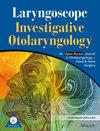Transposition of temporoparietal fascia flap through lateral orbital window for anterior skull base reconstruction: A cadaveric feasibility study
Abstract
Objective
To evaluate the feasibility of utilizing a temporoparietal fascia flap (TPFF) via the lateral orbital window for anterior skull base reconstruction (ASBR) in cadavers.
Methods
Four cadavers underwent anatomical dissections on eight sides. The dissection procedure involved exposing the anterior skull base (ASB) using endoscopic endonasal techniques, dissecting the orbit, harvesting the temporalis muscle fascial flap (TPFF), and transposing the TPFF to the ASB through the lateral orbital window. The minimum required length (MRL) of the TPFF to reach the ASB and maximum harvestable length (MHL) of the flap were determined. A computed tomography (CT) scan was used to measure the dimensions of the anterior skull base defects (ASBD) in each cadaver.
Results
The harvested TPFFs successfully reached the intended ASBDs. The average MRL and MHL were 14.00 ± 1.06 and 16.45 ± 1.16 cm, respectively. The resulting ASBDs exhibited an average anterior–posterior distance, width, and area of 2.45 ± 0.42 cm, 2.46 ± 0.46 cm, and 5.17 ± 1.07 cm2, respectively. Moreover, utilizing this method, the TPFF consistently reached the posterior wall of the frontal sinus in all cadavers.
Conclusions
The TPFF can be effectively utilized to cover the ASBD by passing through the lateral orbital window. The TPFF serves as a viable option for repairing defects in the posterior wall of the frontal sinus.
Level of Evidence
Level 4.


 求助内容:
求助内容: 应助结果提醒方式:
应助结果提醒方式:


